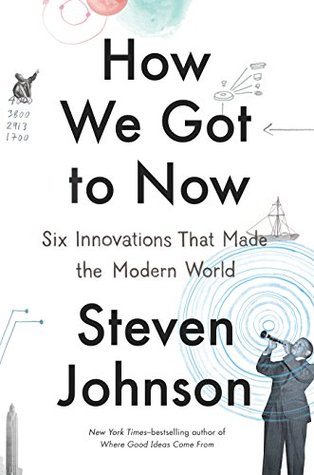More on this book
Community
Kindle Notes & Highlights
Read between
April 14 - April 24, 2019
Our lives are surrounded and supported by a whole class of objects that are enchanted with the ideas and creativity of thousands of people who came before us: inventors and hobbyists and reformers who steadily hacked away at the problem of making artificial light or clean drinking water so that we can enjoy those luxuries today without a second thought, without even thinking of them as luxuries in the first place.
If one stops to think about our everyday lives, it would be like a world filled with magic for those from past generations!
But Gutenberg’s creation advanced the march of science in another, less familiar way: it expanded possibilities of lens design, of glass itself. For the first time, the peculiar physical properties of silicon dioxide were not just being harnessed to let us see things that we could already see with our own eyes; we could now see things that transcended the natural limits of human vision.
The Renaissance also benefited from a patronage system that enabled its artists and scientists to spend their days playing with mirrors instead of, say, foraging for nuts and berries. A Renaissance without the Medici—not the individual family, of course, but the economic class they represent—is as hard to imagine as the Renaissance without the mirror.
THE STORY OF GLASS reminds us how our ingenuity is both confined and empowered by the physical properties of the elements around us.
But sometimes the sheer novelty of an object can make its utility hard to discern.
You could make a fortune in 1800 by taking things that grew only in high-energy environments and shipping them off to low-energy climates. But the ice trade—arguably for the only time in the history of global commerce—reversed that pattern.
Humans had been experimenting with the technology of heat for at least a hundred thousand years, since the mastery of fire—arguably Homo sapiens’ first innovation. But the opposite end of the thermal spectrum was much more challenging. A century into the industrial revolution, artificial cold was still a fantasy.
ideas are fundamentally networks of other ideas. We take the tools and metaphors and concepts and scientific understanding of our time, and we remix them into something new.
Tools for measuring heat and weight with increased precision were developed, along with standardized scales such as Celsius and Fahrenheit, and as is so often the case in the history of science and innovation, when you have a leap forward in the accuracy of measuring something, new possibilities emerge.
It’s no accident that the world’s largest cities—London, Paris, New York, Tokyo—were almost exclusively in temperate climates until the second half of the twentieth century. What we are seeing now is arguably the largest mass migration in human history, and the first to be triggered by a home appliance.
But perhaps the most significant legacy of the telephone lay in a strange and marvelous organization that grew out of it: Bell Labs, an organization that would play a critical role in creating almost every major technology of the twentieth century. Radios, vacuum tubes, transistors, televisions, solar cells, coaxial cables, laser beams, microprocessors, computers, cell phones, fiber optics—all these essential tools of modern life descend from ideas originally generated at Bell Labs.
It was a profound breakthrough: for the first time, white America welcomed African-American culture into its living room, albeit through the speakers of an AM radio. The jazz stars gave white America an example of African-Americans becoming famous and wealthy and admired for their skills as entertainers rather than advocates.
We rarely think about it, but the growth and vitality of cities have always been dependent on our ability to manage the flow of human waste that emerges when people crowd together. From the very beginnings of human settlements, figuring out where to put all the excrement has been just as important as figuring out how to build shelter or town squares or marketplaces.
Until the twentieth century, one of the givens of being a parent was that you faced a very high likelihood that at least one of your children would die at an early age. What may well be the most excruciating experience that we can confront—the loss of a child—was simply a routine fact of existence.
For almost two thousand years, all the way to the dawn of the industrial age, the candle was the reigning solution for indoor lighting.
Consider what life would have been like for a farmer in New England in 1700. In the winter months the sun goes down at five, followed by fifteen hours of darkness before it gets light again. And when that sun goes down, it’s pitch-black:
By any measure, Edison was a true genius, a towering figure in nineteenth-century innovation. But as the story of the lightbulb makes clear, we have historically misunderstood that genius. His greatest achievement may have been the way he figured out how to make teams creative: assembling diverse skills in a work environment that valued experimentation and accepted failure, incentivizing the group with financial rewards that were aligned with the overall success of the organization, and building on ideas that originated elsewhere.


